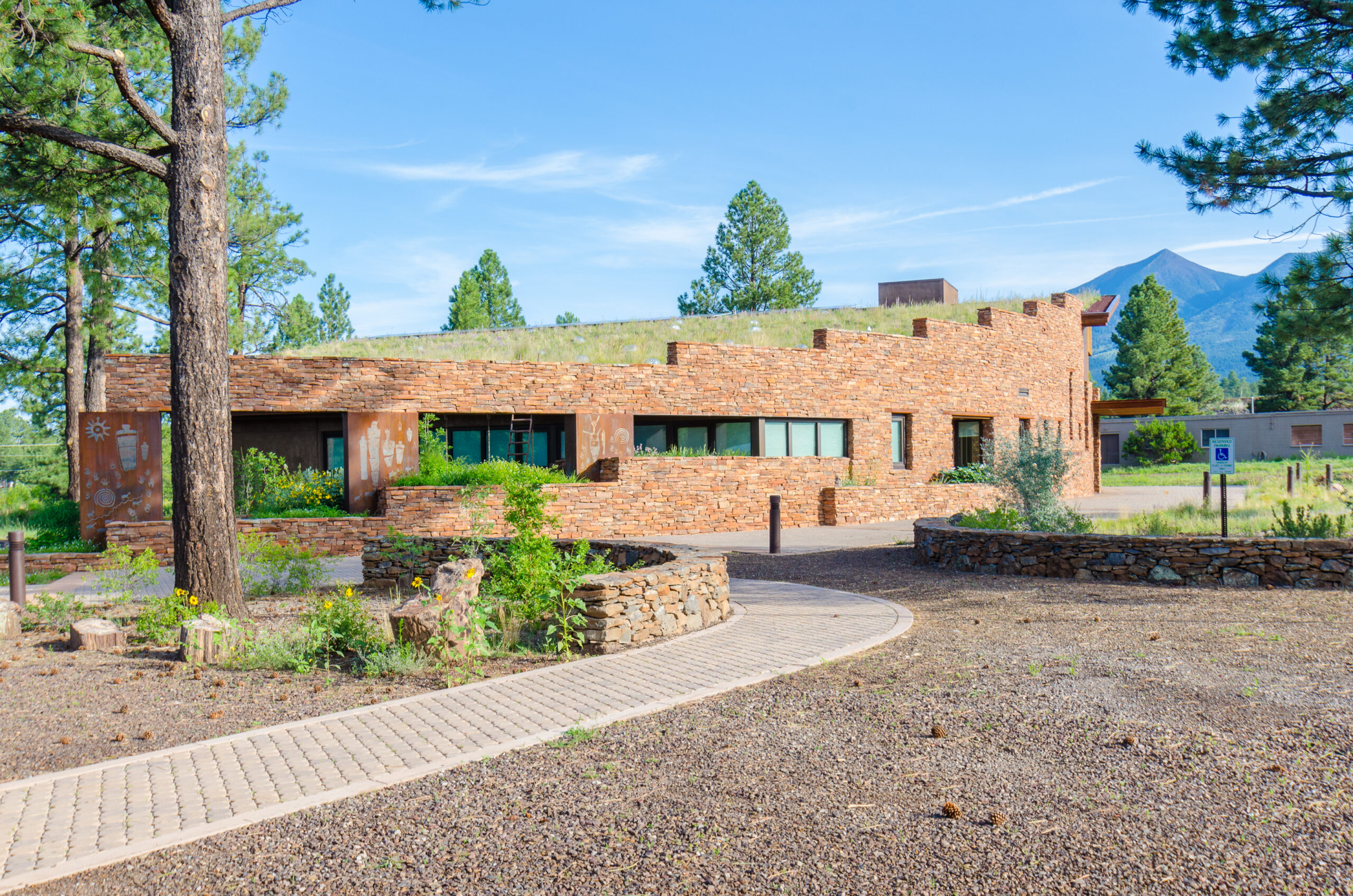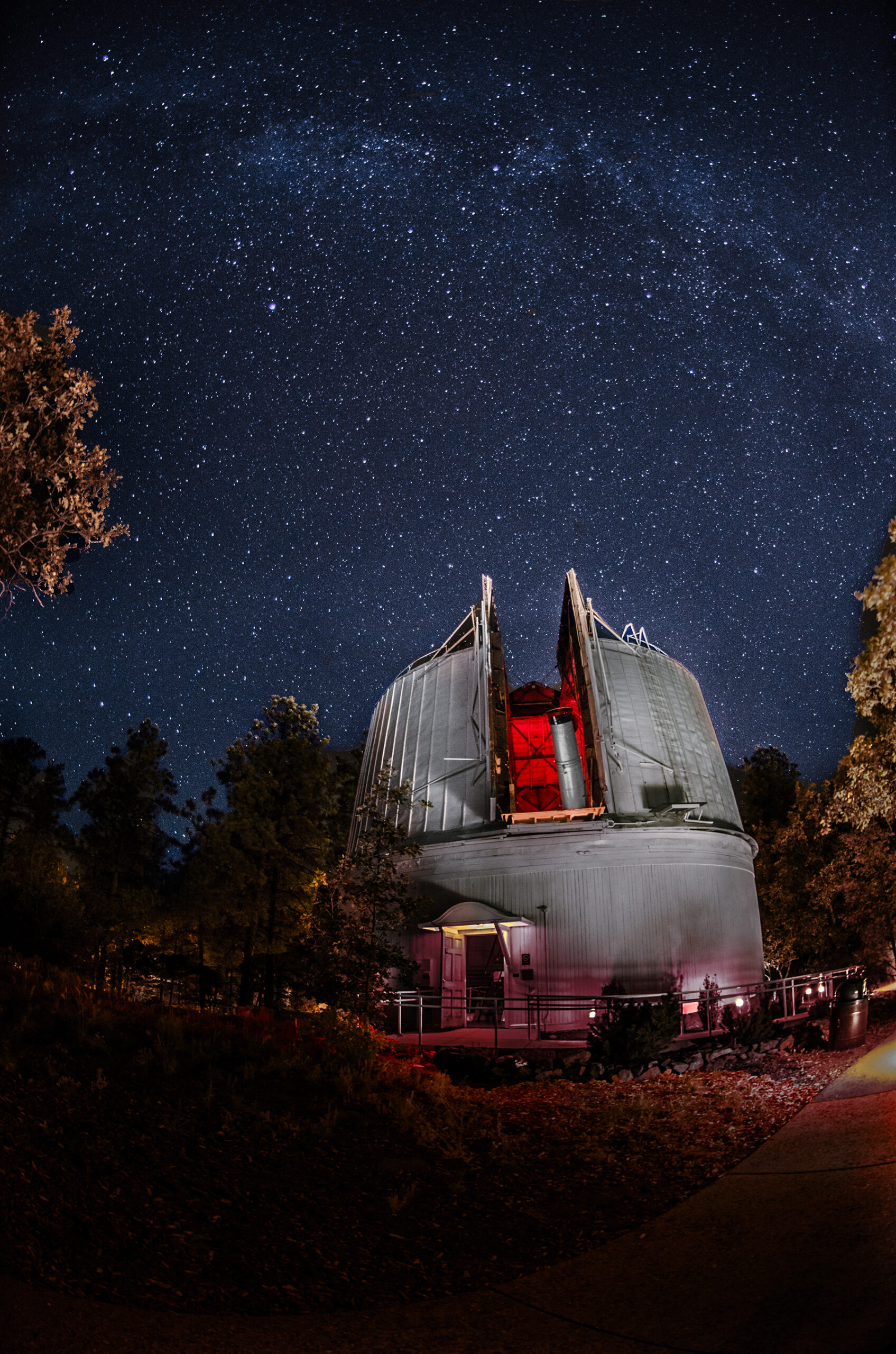Breathe easy when you take in big gulps of Flagstaff’s crisp mountain air while standing in the world’s largest ponderosa pine forest. In fact, the American Lung Association named eco-friendly Flagstaff the “cleanest U.S. city for year-round particle pollution.”
Clean air and the pine-scented outdoors are a large part of what keeps environmentally conscious Arizonans coming back to this charming mountain town — and there’s a whole lot more.
Brix Restaurant stands behind local and sustainable practices
Conde Nast Traveler pinned Flagstaff on the international food map when they put Brix restaurant on their “Top 95 New Restaurants in the World” list in 2007. For over 15 years, owners Paul and Laura Moir’s philosophy of local and sustainable foods has driven their continued success.
Advocates for sustainable practices and procurement methods believe that the best meals feature the finest, freshest seasonal ingredients and that the community benefits most when local farmers and ranchers supply a steady stream of fresh, pure ingredients and proteins.
The award-winning couple’s role in establishing supply chains and partnerships with Arizona’s ranchers and farmers has helped propel the flourishing Flagstaff food scene. They recently received the Outstanding Eco-Friendly Programming: Restaurant/Venue Award 2021 from Discover Flagstaff, the official tourism site for the City of Flagstaff.
Sustainable Suds
Sip sustainable suds on Mother Road Brewery’s dog-friendly patio while enjoying the mountain sunshine. It’s a fun gathering place for locals and visitors alike. Using pure mountain water from snowmelt on the San Francisco Peaks to brew their award-winning ales, the sustainable brew haus provides two million pounds of spent grain every year to local cattle ranchers to reuse as feed.
Green initiatives like this and their CO2 recapture system that catches carbon dioxide from the brewing process, filters it, then re-injects it back into their beers recently earned Mother Road the Green Business Award from the Greater Flagstaff Chamber of Commerce.
Further, Mother Road supports Arizona Game and Fish Department with their Conserve and Protect Golden Ale. A portion of all the ale’s proceeds protects the state’s 800 unique wildlife species. The eco-centric brewery is also working with Flagstaff’s Riordan Mansion State Park to develop a fundraising ale.
As a member of Arizona Forward, Mother Road Brewery is dedicated to cooperative efforts that improve the environmental sustainability and the economic vitality of the state.
 Arizona’s First Plati
Arizona’s First Plati
num LEED Building
The state-of-the-art Easton Collection Center provides stable and secure environments for the Museum of Northern Arizona collections. It’s one of Arizona’s first Platinum LEED buildings. Throughout the design process, architects and local builders consulted with Native American advisors. The building entrance faces east, greeting the sun each morning; its circular shape invokes the cycles of life; and also has a living roof. The 17,000-square foot building exceeds U.S. Green Building Council’s Platinum Leadership in Energy and Environmental Design (LEED) Certification requirements.
Built in 2009, just about everything within the building’s orientation is sustainable: Thermal insulated roof, UV filtered skylights, insulated windows, photovoltaic solar panels and energy saving fixtures to reduce the production of greenhouse gases. Recycled materials from old buildings were used and where possible. The design team selected regionally manufactured materials to reduce transportation costs, including native Coconino sandstone and Douglas fir salvaged from trestles out of the Great Salt Lake in Utah.
Attention to sustainable detail can be found within other areas of the building, such as the wall insulation — which is made from recycled newspapers. Paints and other materials used are low in volatile organic compounds that aids in improving indoor air quality.
A living roof, planted with native vegetation, covers the entire main building area and helps to reduce energy consumption while extending the life of the roof. It also eliminates stormwater runoff — the excessive drainage is collected in a 22,000-gallon rain/snow water cistern and then recirculated back to the roof’s irrigation system.
The Easton Collection Center is open to the public during various Museum of Northern Arizona events throughout the year. Check musnaz.org for dates and times.
Arboretum at Flagstaff
Take it outdoors to discover what’s in bloom in the lovely grounds and gardens that enhance the Arboretum at Flagstaff’s natural forest setting. The Arb, as locals call it, looks for innovative solutions to conservation issues of this high-altitude environment. You can dance with native butterflies in the butterfly pavilion or attend the Summer Concert Series. Discover more at www.thearb.org.
 Awe-Inspiring Dark Skies
Awe-Inspiring Dark Skies
The legacy of Lowell Observatory has been intertwined with Flagstaff history since it opened in 1894. It was here that Lowell scientists discovered Pluto 36 years later. U.S. Geological Survey and NASA chose Lowell to map the moon for its lunar landing. In fact, every person who has walked on the moon trained right here in Flagstaff. You can view the night skies from the historic Clark or the state-of-the-art telescopes at Lowell’s new Giovale Open Deck Observatory. The City of Flagstaff has partnered with Lowell to protect the region’s dark skies over the years. Flagstaff became the world’s first International Dark Sky City in 2001, leading the way for neighboring communities including Coconino County, Flagstaff Area National Monuments and Sedona to do the same.
Sustainability and concern for the environment are a natural part of the Flagstaff lifestyle. The Greater Flagstaff Area Chamber of Commerce offers workshops to their business members that share ways Further, Discover Flagstaff promotes ways to play and stay responsibly. The City Council’s sustainability goals encompass residential and business programs for water conservation, recycling, waste removal, regional transportation and development. As a visitor, you can rest assured that an infrastructure is in place to help reduce your footprint.
Stacey Wittig is a travel writer based near Flagstaff. Visit her travel blog at www.UnstoppableStaceyTravel.com.






